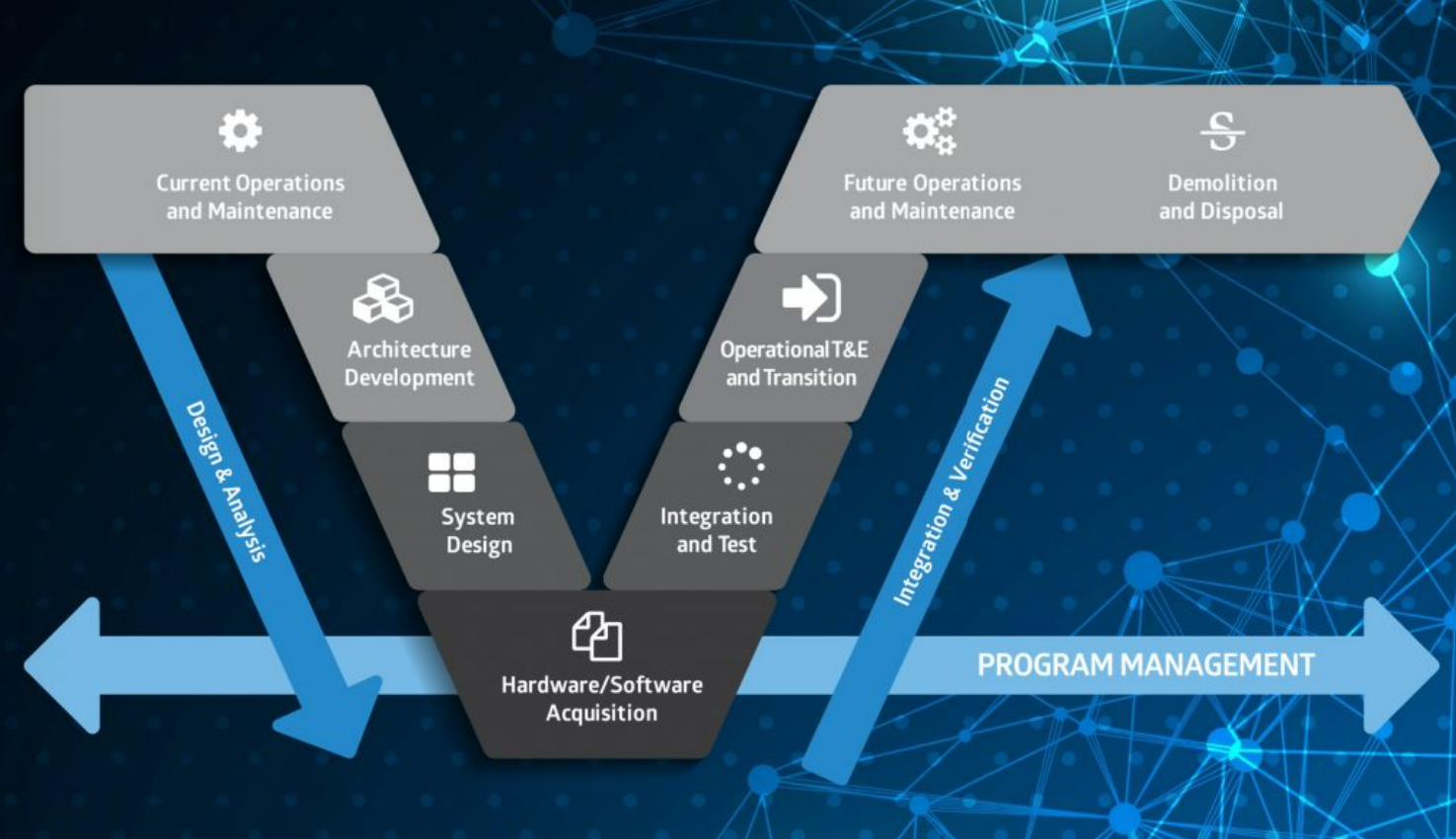Incorporate MBSE in Systems Engineering Curriculum
In the world of systems engineering, one notion can be agreed on: the future of systems engineering is model-based. This is not a bold statement; it...
.png)
Systems engineering (SE) has multiple definitions which makes defining the fundamental concepts of the field challenging. The misconception of SE occurs because it’s perceived that there is no process or framework. With so many types of processes out there, it is easy to believe that we pick and choose the processes we favor. In reality, the SE process that aids any project and translates better with the team is the V-Model.

The V-Model is an extension of the waterfall model and adds a testing phase for each corresponding development stage. Unlike the waterfall model, the V-Model has a focus on the user, implying that the users are involved in all aspects of the development cycle. The V-Model is read left to right, starting with the user’s needs and ending with the user-validated system on the right side. The model’s left side accounts for decomposition and definition activities, which resolve the system architecture and design elements. The right side focuses on integrating and verifying the system development activities. The V-Model provides guidance for SE during the project lifecycle.
Like any process, the hardest part is the beginning. The SE begins the process by understanding the users’ needs and translating them into requirements. Converting user needs into clear, concise, and verifiable system requirements is an important part of the SE process. A good requirement has characteristics that are necessary, verifiable, and attainable. It can be said many can write requirements, but very few can write good requirements that provide a solution. Some common issues one blogger learned and found when doing requirements are the following:
Setting requirements allows the team to stay within the scope of the project. It’s easy for teams to lose focus on the big picture, but it’s SE’s job to realign the focus.
Systems engineering is a process that is best regarded as a set of principles, based on systems thinking and a set of systems building blocks we derive from the V-Model. Each SE experience is dependent on variables such as the complexity of the problem and solution. But it will always include elements of:
The SE is the “glue” between the functional elements of a system as well as the gatekeeper of the architectural intent and subsequent project realization. Without a qualified person active in this role, the team struggled, and this struggle is only magnified as the size and complexity of the system grow. At some point, without SE, large-scale systems simply become unrealizable.
Ready to explore more? Visit our website to discover innovative solutions and stay updated on the latest industry trends!
Have questions about model-based systems engineering or requirements management? Talk to an expert and see how Innoslate can streamline your projects from start to finish.
.png)
In the world of systems engineering, one notion can be agreed on: the future of systems engineering is model-based. This is not a bold statement; it...
Leaving your old tool might seem daunting, but Innoslate is a modern, cloud-computing tool that makes moving your data simple. The transition process...

Self-Assessment Guide Model-Based Systems Engineering (MBSE) is more than drawing diagrams or using a modeling tool — it’s a disciplined approach to...